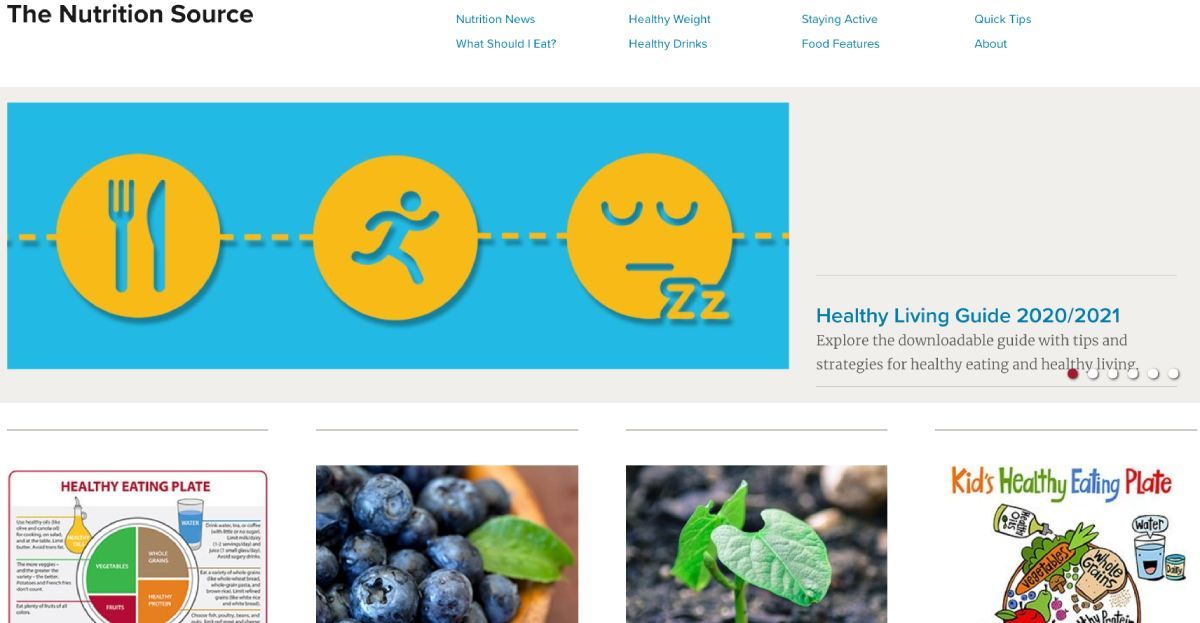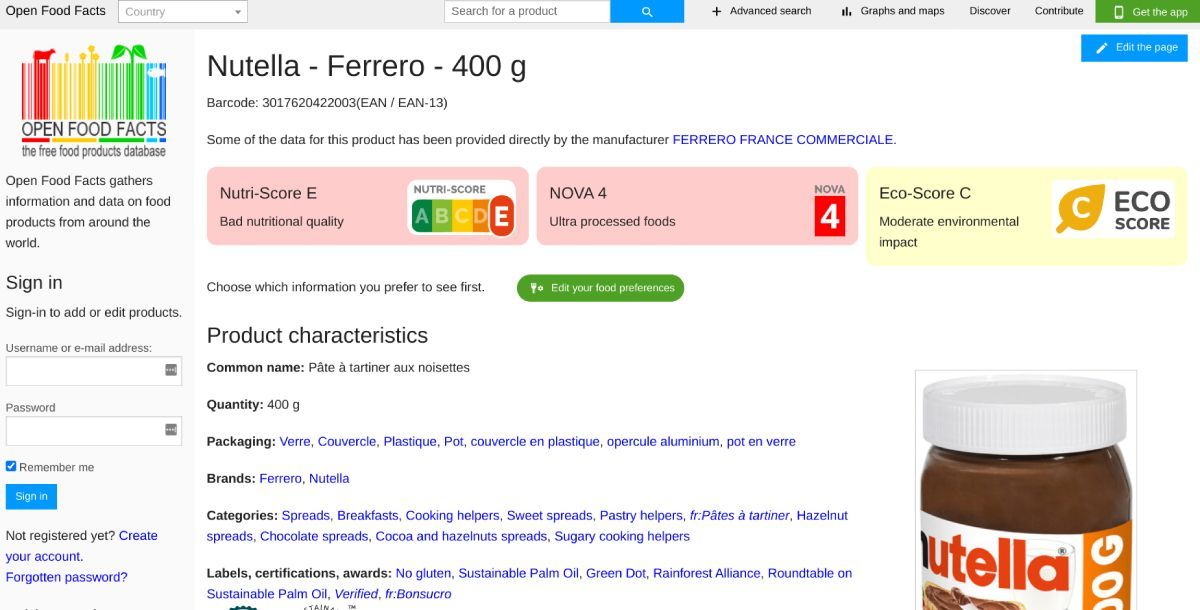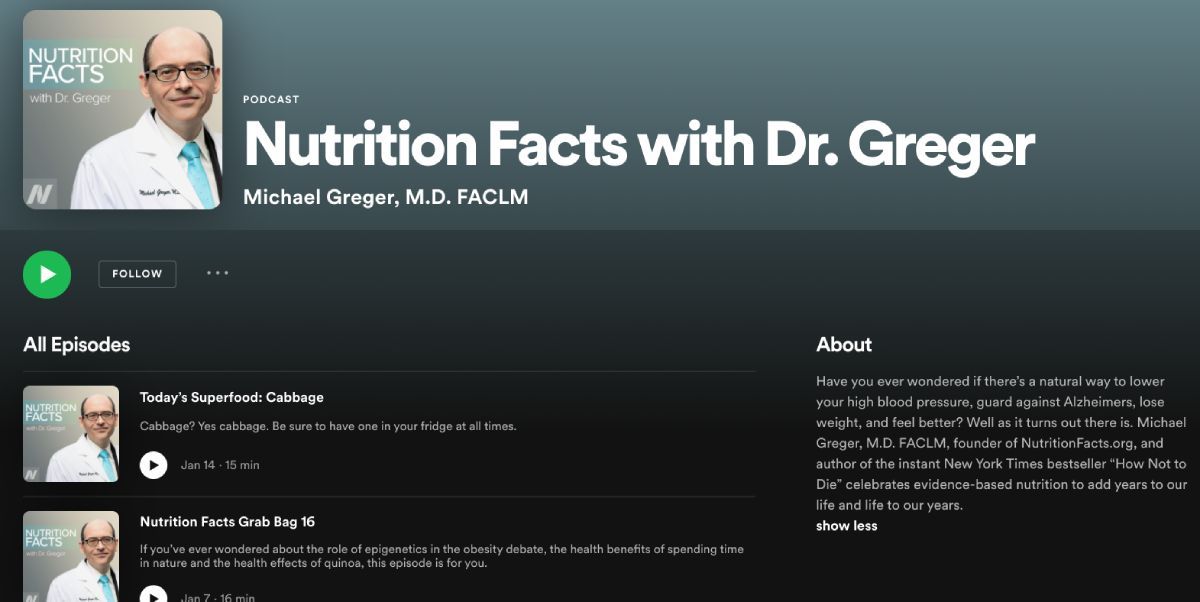The cornerstone of health is a nutritious diet. But how does one navigate conflicting information about what's good for us and what isn't? These free food apps will help you understand nutrition and adopt healthy eating habits.
It's well established that you need a combination of diet and exercise to lose weight, but there is so much more to nutrition than just putting on pounds. What you consume can affect your immunity, your general health risks, your mood, and so much more. You're doing yourself a disservice if you don't understand nutrition. These apps and sites are here to fix that.
1. The Nutrition Source (Web): Harvard's Science-Based Guides on Nutrition

The Harvard School of Public Health has an entire mini-site dedicated to nutrition and healthy eating for the layperson. The Nutrition Source is backed by science and research, but it spares you that jargon and only serves the ready-to-digest nuggets.
For example, take the Healthy Living Guide newsletter, which includes thoroughly-researched answers to vexing questions of the time like how are nutrition and immunity linked. It goes into nutritional trends like Mindful Eating and Precision Nutrition, as well as offering practical advice like how to eat healthy on a budget.
The whole website has the kind of research you'll be shocked to find for free online. The recommended Healthy Eating Plate explains how to constitute a meal and what to exclude from it. You'll find detailed posts on fats, carbohydrates, proteins, all with citations to studies that back up the claims. The Nutrition Source is about being a trustworthy and reliable database of nutritional facts, and it delivers.
2. Peel (Android, iOS): Scan Ingredients Directly, Not Barcodes
You will find a lot of apps that scan barcodes to tell you the nutritional value and other information about a product. But these often don't work with the ever-changing array of new foodstuffs. Peel has a simpler solution. It scans the ingredients list and checks it against your dietary preferences.
Fire up the app, sign in to an account, and choose your preferred diet (for example, paleo or vegan) and other dietary conditions (for example, no artificial sweeteners). Then point its camera at any product's ingredients list. After you take a photo, Peel will ask to crop it to exactly the ingredients.
The app then uses OCR technology to recognize the ingredients and match them against your chosen dietary needs. Peel will tell you whether you can avoid or consume the chosen food, and specify which of the ingredients don't meet your conditions. It's fast and simple, and already stocked with most of the information you'll need for any product. It's remarkable that Peel is completely free.
Download: Peel for Android | iOS (Free)
3. Ingred (Android, iOS): Varied Database to Know More About Ingredients
Ingred is similar to Peel. You take a photo of a product's ingredients, not its barcode, and Ingred will "read" the list to give you nutritional information. What's different is the list of references both the apps use.
Peel has its own set of experts who classified 32,000+ ingredients for scientific results. Ingred relies on a combination of data collected from various places. For example, the food additives list is compiled from information from the EU, WHO, No Mas Aditivos, and others. It also uses blogs to find information about palm oils or vegan additives. So the database of reference is more varied than Peel, but not necessarily more scientifically accurate.
Ingred also includes a few other features. First, you can add ingredients that Ingred doesn't recognize in its database already. This is useful for local products that have non-global ingredients.
Second, Ingred also lets you save a product to refer to it later or share its information with others in a jiffy. And finally, it can analyze images from your gallery. So if a friend takes a photo and shares it with you, you can check the ingredient list for them on Ingred.
Download: Ingred for Android | iOS (Free)
4. Open Food Facts (Web): Publicly Edited Encyclopedia of Food Products

Every food product has so much information on its back, about what's in it, how and where it was manufactured, the packaging and certifications, and so on. How does a layperson make sense of it all? You turn to Open Food Facts (OFF), a Wikipedia of food products where anyone can contribute and edit information.
From Lays to small-brand chips, OFF has information about products from around the world. For most things, you'll find pictures of the package, ingredients list, ingredients analysis, packaging material, and nutritional facts. Anyone is free to add to these if the information is missing, as OFF encourages contributors from everywhere. You can even filter the product list by country to find only those items available near you.
Most food products also have a Nutri-score, Eco-Score, and a NOVA rating. The NOVA rating is particularly important for those who care about whether the food is processed or organic. You can generate an advanced search to filter products based on your preferences, thus getting a quick list of what you should and shouldn't be eating.
Download: Open Food Facts for Android | iOS | Windows (Free)
5. Nutrition Facts With Dr. Greger (Podcast): 15 Minute Capsules on Nutrition

Dr. Michael Greger literally wrote the book on nutrition facts. His bestseller How Not to Die is an oft-referenced and much-recommended read for those trying to understand nutrition for the first time. If you don't want to pay for or read the book, Dr. Greger's wonderful podcast is free, with up-to-date medical facts.
Each episode of Nutrition Facts With Dr. Greger is roughly 15 minutes, with longer Q&A sessions once in a while. Every week, Dr. Greger picks a new topic and delivers a quick lesson in the truths and myths about it. The information is presented in a way that any layman can understand, so you don't need to have any technical know-how. And there is also practical advice for everyday life.
Dr. Greger has an excellent narration style for podcasts, enunciating certain words and stretching others like a trained voice actor. Even though it's just him talking for the length of the episode, it feels entertaining and engaging throughout. It helps that the podcast is just 15 minutes, of course.
Subscribe: Nutrition Facts with Dr. Greger on Apple | Google | Spotify
Understand Your Relationship With Food
The first step to living a healthier lifestyle is to understand the nutrition your body needs and how to get it. These apps will help you do that, but just as important, you need to understand your own relationship with different foods.
Your taste is only one aspect of this larger food. How you think about what you eat, and when you eat, are important. It affects everything. For example, there are food diary apps to track what you eat and your corresponding moods. You'll be surprised to discover the effect food has on how you feel every day.
Practices like mindful eating can help control cravings, and even aid in tackling food disorders. All the information you can pick up about food will only go towards a better and healthier you.